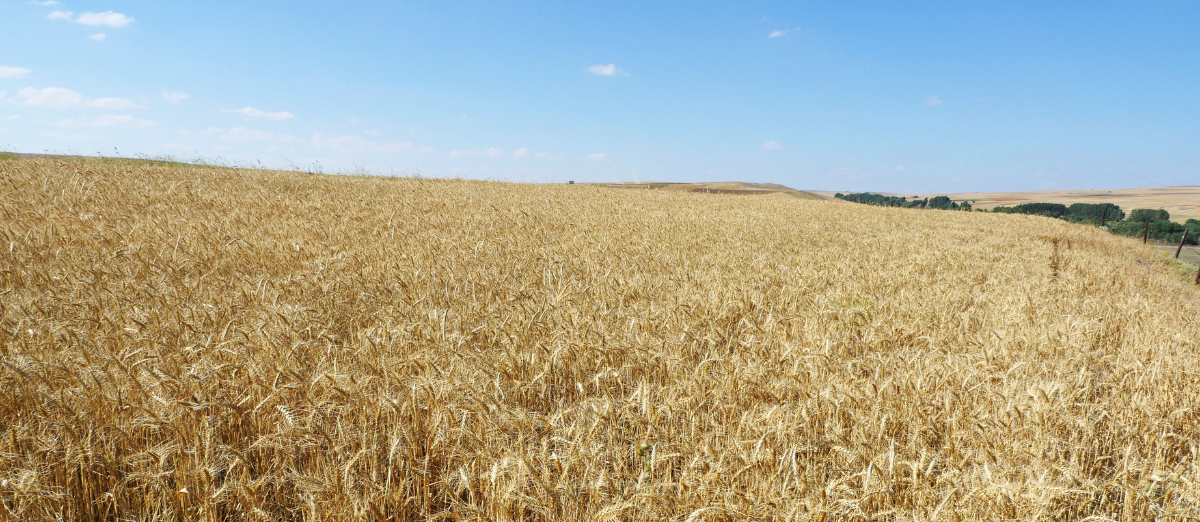Fall 2022 Wheat Planting Decision
Fall 2022 Wheat Planting Decision

Corn harvest is now underway and Kentucky grain farmers will soon decide if and how much wheat they will plant this fall. Compared to last year there are significant increases in wheat and soybean prices, major increases in all fertilizer prices, and fuel prices that have almost doubled. The following analysis quantifies these relative changes to estimate the profitability for crops harvested in 2023. The analysis includes estimated returns comparing double-cropped wheat/soybeans with full-season soybeans for the 2023 crop, and the likely implications for Kentucky grain farmers.
Additional costs associated with double-cropping are accounted for, including fuel, fertilizer, herbicides, machinery repairs and depreciation[1], labor, hauling, etc. The analysis assumes a blended mix of selling directly from the field and selling from storage for both wheat and soybeans, as well as expected basis for each crop with those scenarios. This results in 2023 crop prices of $8.85/bu for wheat and $13.75/bu for soybeans.
Two regions with different agronomic characteristics are evaluated. The first region is along the southwest tier of counties roughly between I-24 and I-65, which traditionally does a lot of double-cropping. The second region is along the northwest tier of counties (OhioValley region) that has some of the best yields for corn and soybeans, but traditionally plants less wheat. Cash rent is assumed to be $175/acre for both these regions for the average ground and $225/acre on the best ground (note: this will vary substantially, but is done here for illustrative purposes only). Other major assumptions are: $4.50/gallon fuel, 50 mile one-way grain hauling, $.95/unit N, $.67/unit P, and $.72/unit K.
Southwest Tier Assumptions (Average Ground):
72 bu wheat
42 bu double-cropped soybeans
50 bu full-season soybeans
Resulting net profits:
+$279 double-crop
+$153 full-season soybeans
This results in a $126 difference in favor of the wheat-soybean double-crop. The double-crop soybean yield would need to decrease to 32 bushels before full-season soybeans were as profitable. This would equate to a 36% yield loss of double-cropped soybeans compared to full-season soybeans.
Southwest Tier Assumptions (Best Ground):
90 bu wheat
51 bu double-cropped soybeans
60 bu full-season soybeans
Resulting net profits:
+$502 double-crop
+$236 full-season soybeans
This results in a $266 difference in favor of the wheat-soybean double-crop. The double-cropped soybean yield could drop down to 31 bu before full-season soybeans were as profitable. This would equate to a 48% yield loss of double-cropped soybeans compared to full-season soybeans.
Northwest Tier Assumptions (Average Ground):
65 bu wheat
42 bu double-cropped soybeans
50 bu full-season soybeans
Resulting net profits:
+$220 double-crop
+$153 full-season soybeans
This results in a $67 difference in favor of the wheat-soybean double-crop. The double-cropped soybean yield would have to decrease to 37 bu in this case before full-season soybeans were as profitable. This would equate to a 26% yield loss of double-cropped soybeans compared to full-season soybeans.
Northwest Tier Assumptions (Best Ground):
75 bu wheat
51 bu double-cropped soybeans
60 bu full-season soybeans
Resulting net profits:
+$374 double-crop
+$236 full-season soybeans
This results in a $138 difference in favor of the wheat-soybean double-crop. The double-cropped soybean yield would have to decrease to 40 bu in this case before full-season soybeans were as profitable. This would equate to a 34% yield loss of double-cropped soybeans compared to full-season soybeans.
Given the current expected market conditions, planting wheat looks extremely attractive this fall in all four scenarios, and this is the first year that I have done this analysis that this has occurred. On the best ground in the southwest tier of counties, the wheat-soybean double-crop is projected to net $266/acre more than full-season soybeans. On the best ground in the northwest tier of counties, the wheat-soybean double-crop is projected to net $138/acre more than full-season soybeans.
This analysis doesn’t account for potential payments from Farm Bill programs. However, these programs would pay on base acre crop allocation and not planted acres, so there would be no effect on the planting decision. This analysis does not also account for potentially harvesting straw, which is typically more common in Central Kentucky.
To change the assumptions above to your specific conditions and evaluate your expected profitability, go to the grain budget site to download a customizable budget.
The Corn-Soybean Budgets and Wheat Budgets can be downloaded or opened directly from this page.
[1] $20/acre was deducted from the double-crop scenario to account for fixed depreciation on the wheat enterprise that should not factor into the wheat planting decision.
Recommended Citation Format:
Halich, G. "Fall 2022 Wheat Planting Decision." Economic and Policy Update (22):9, Department of Agricultural Economics, University of Kentucky, September 29th, 2022.
Author(s) Contact Information:
